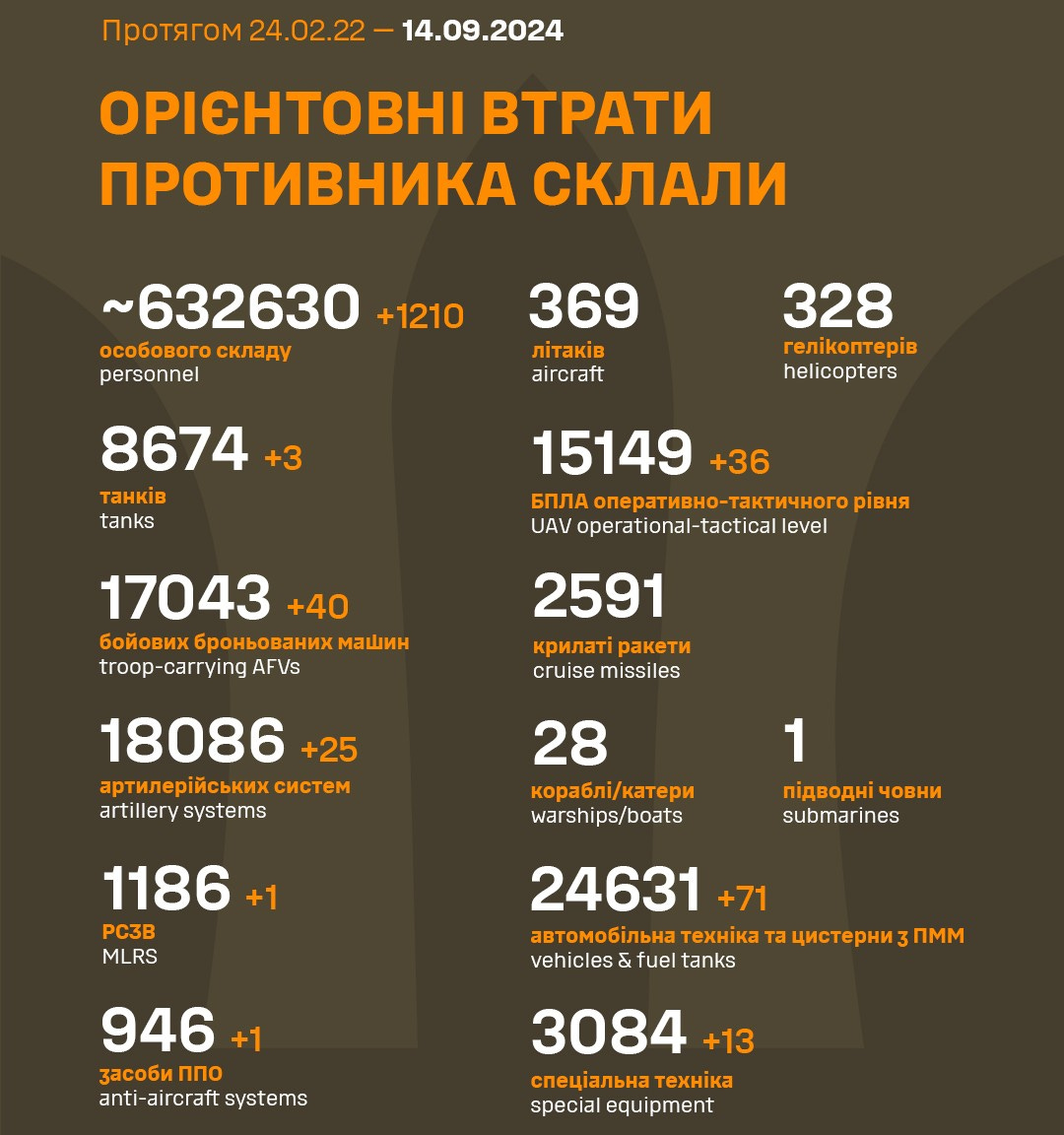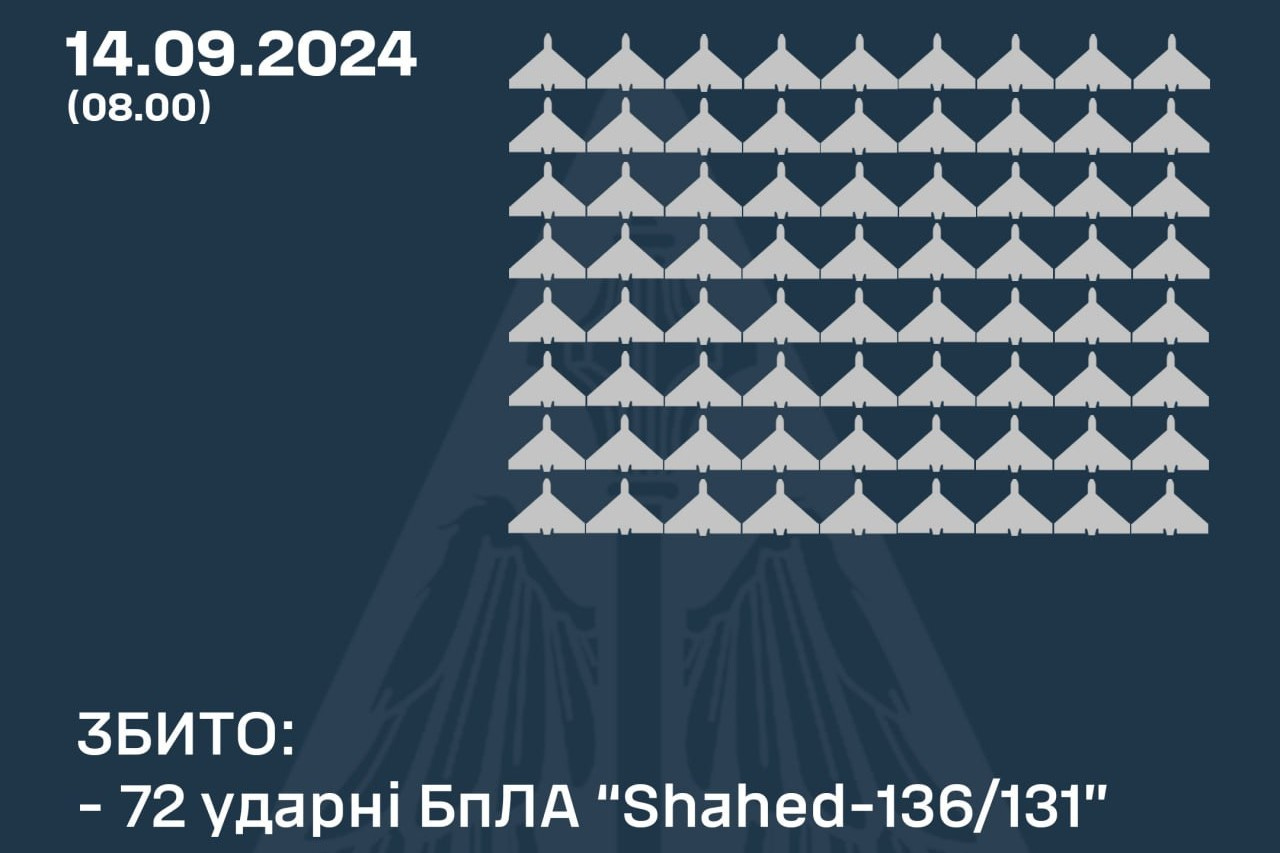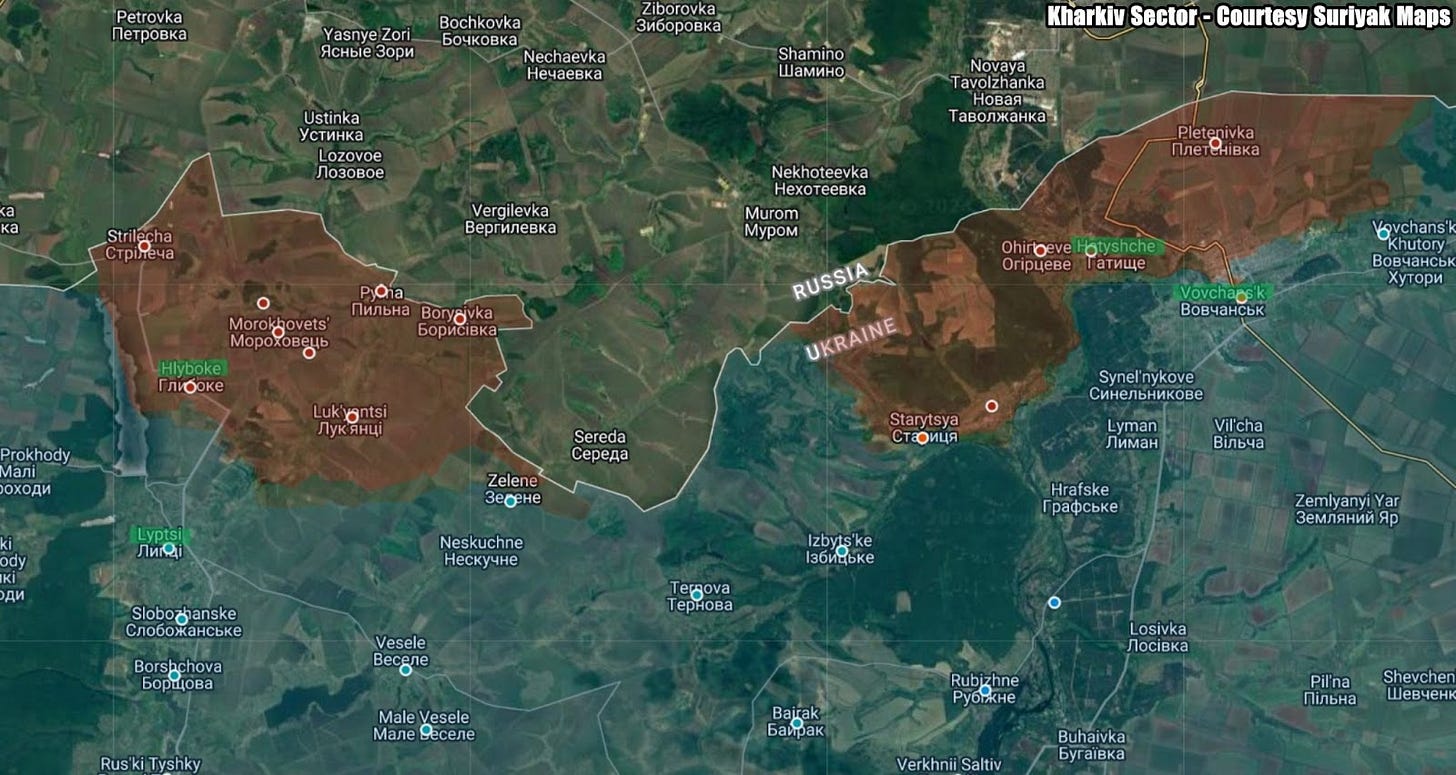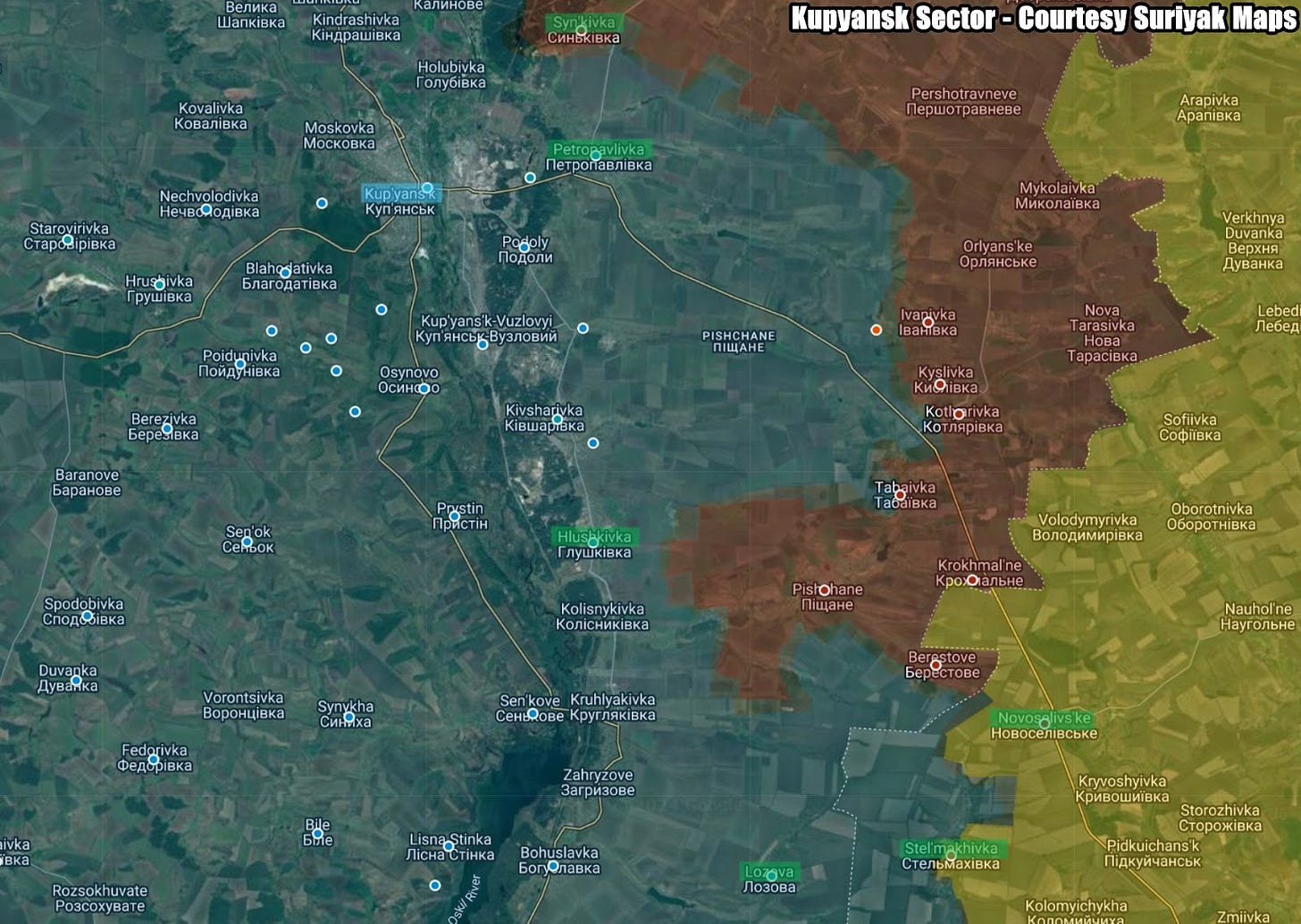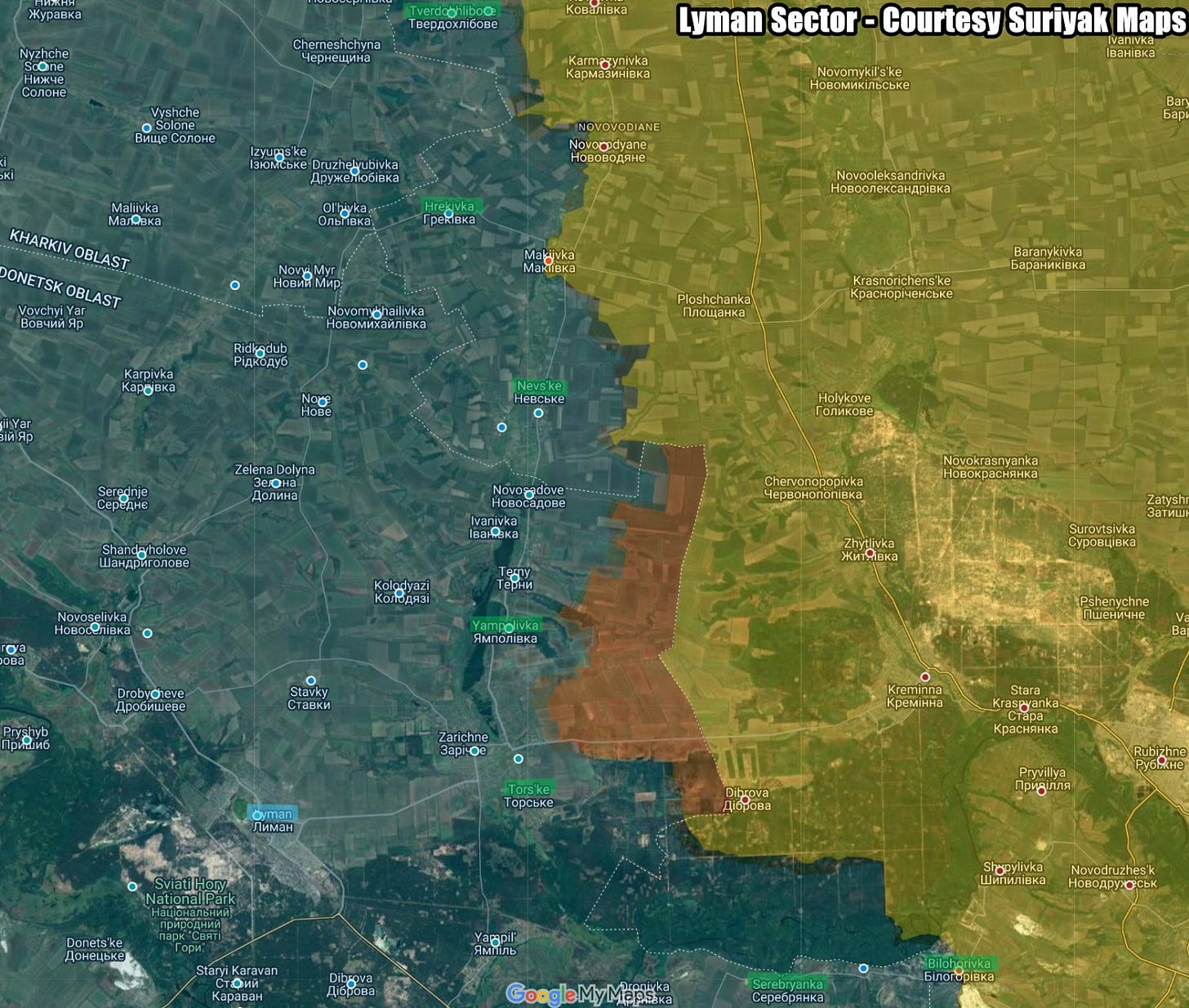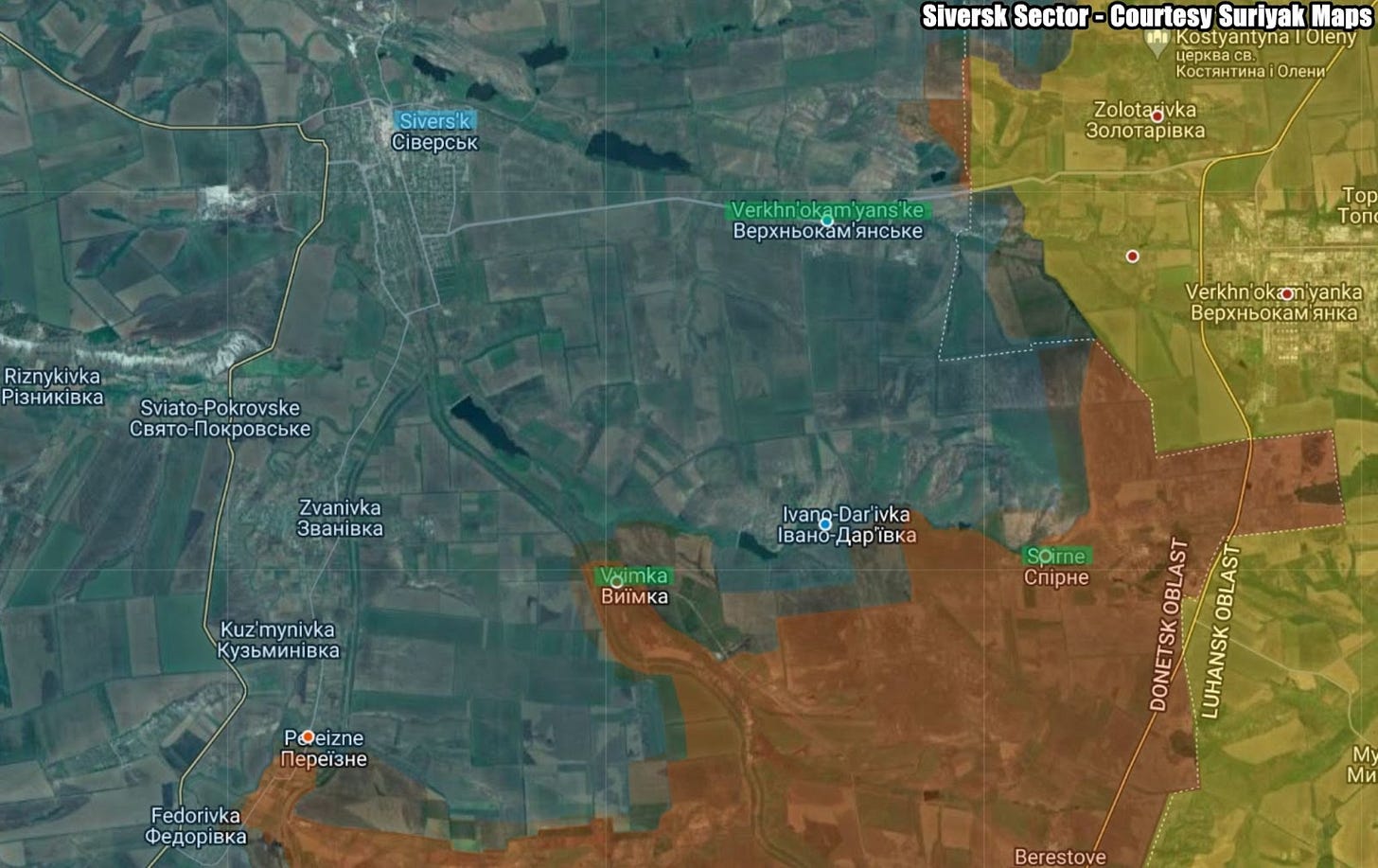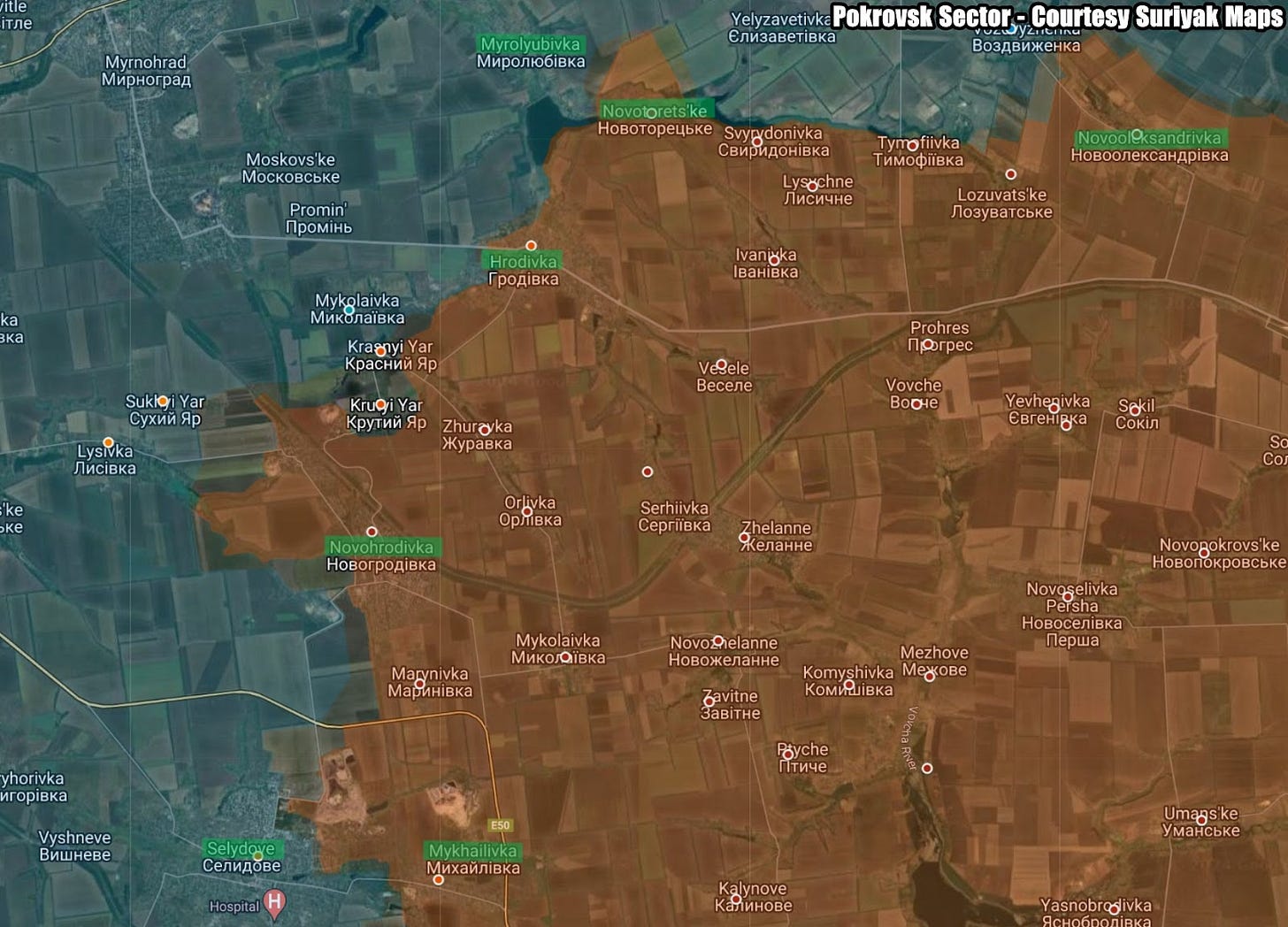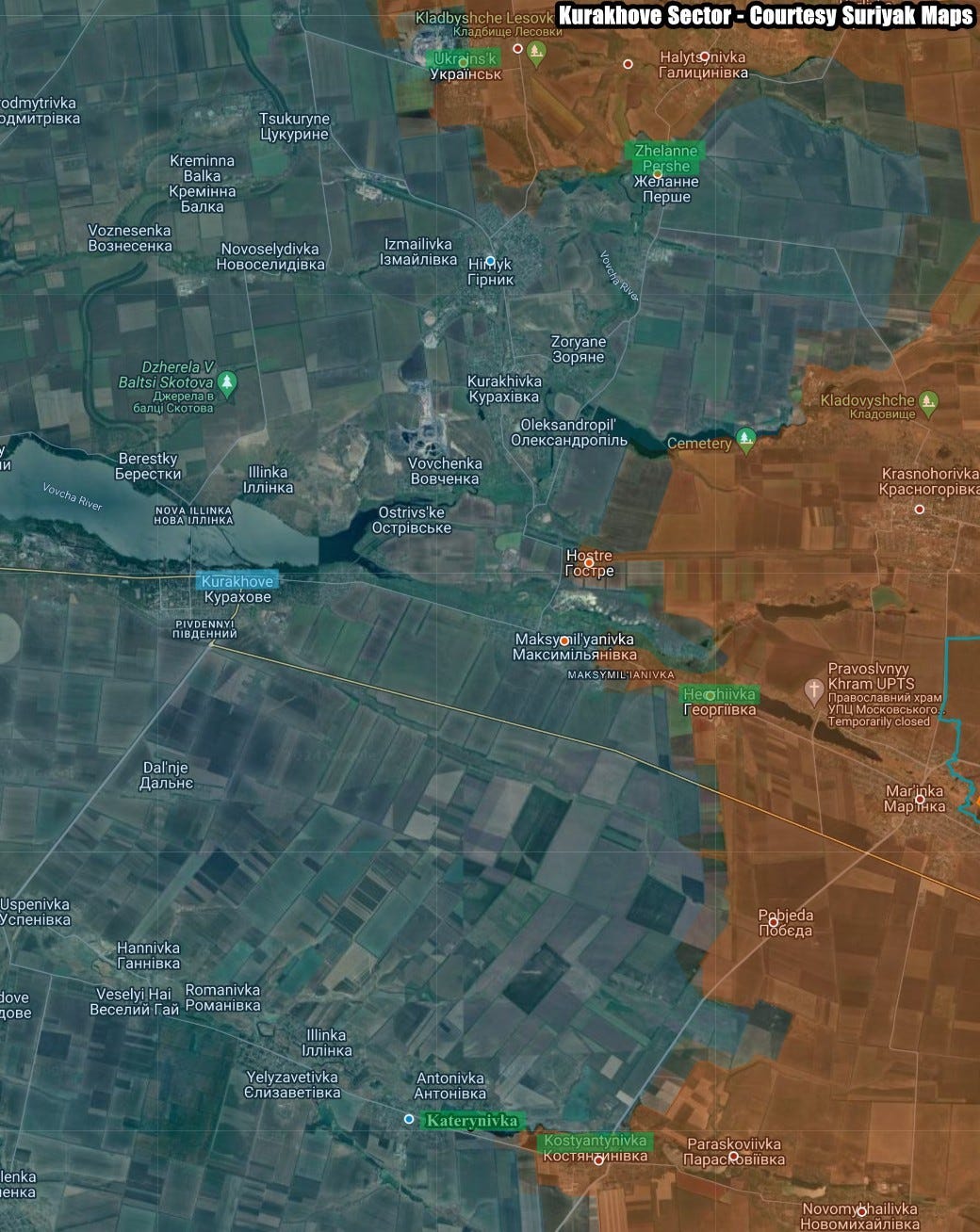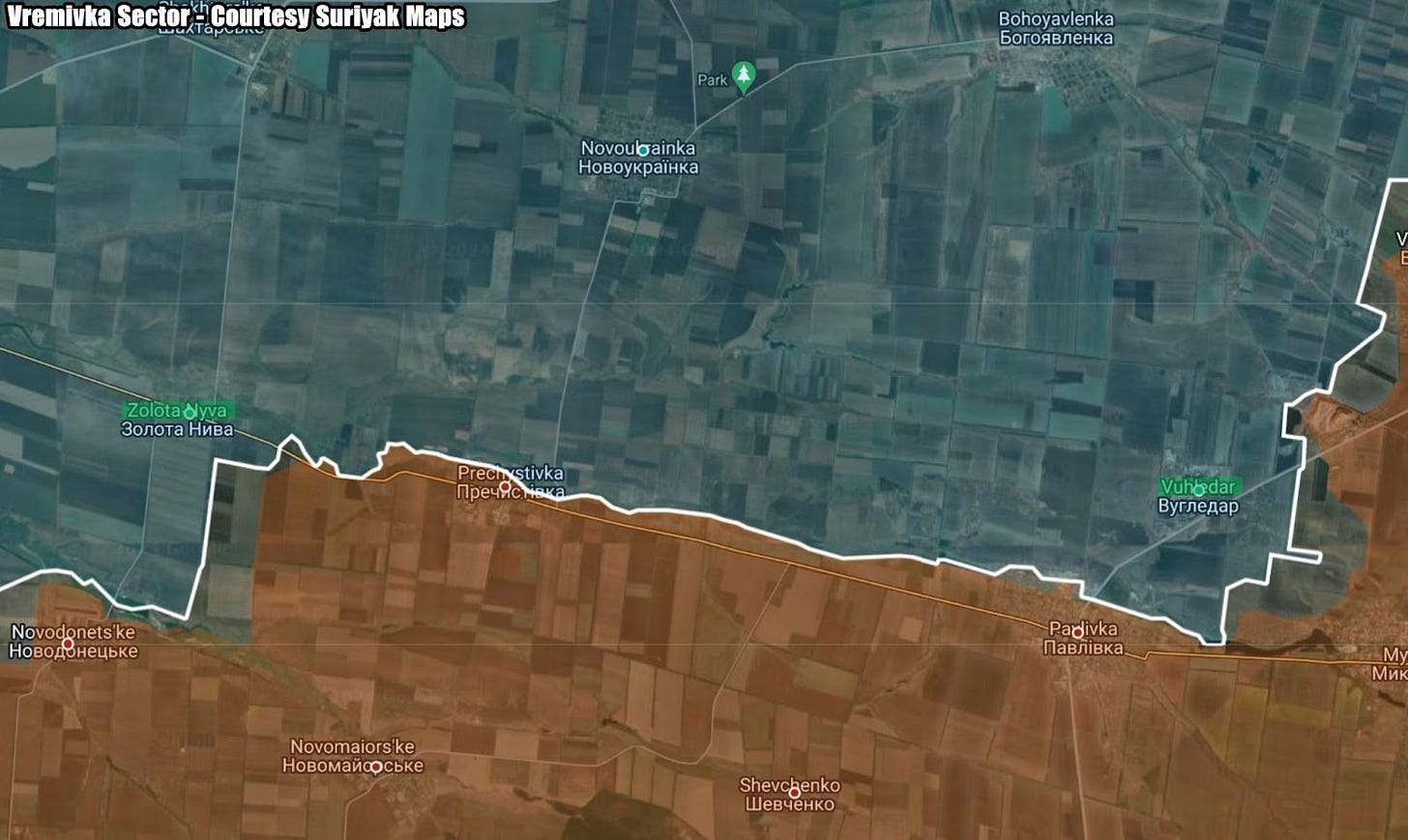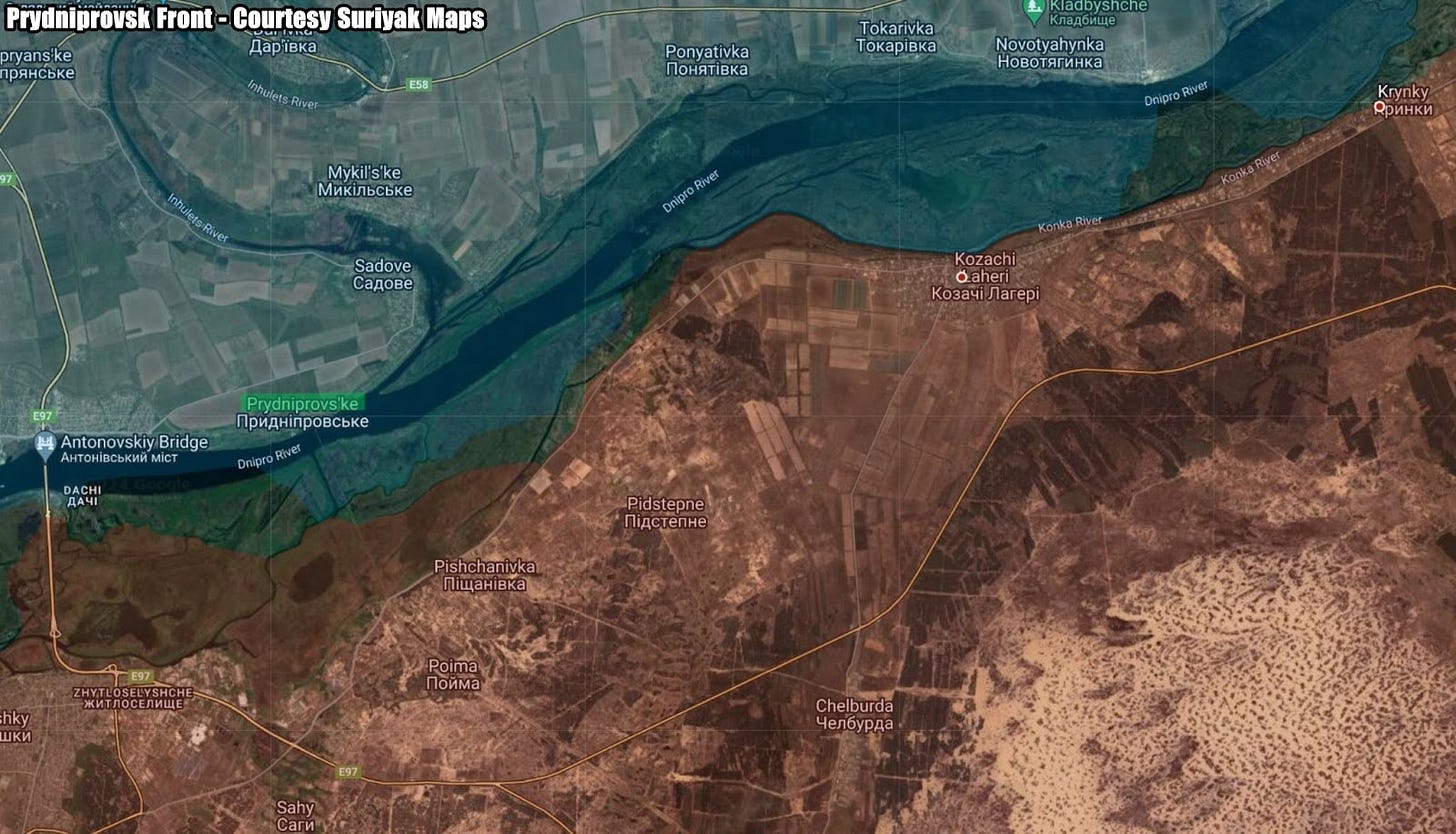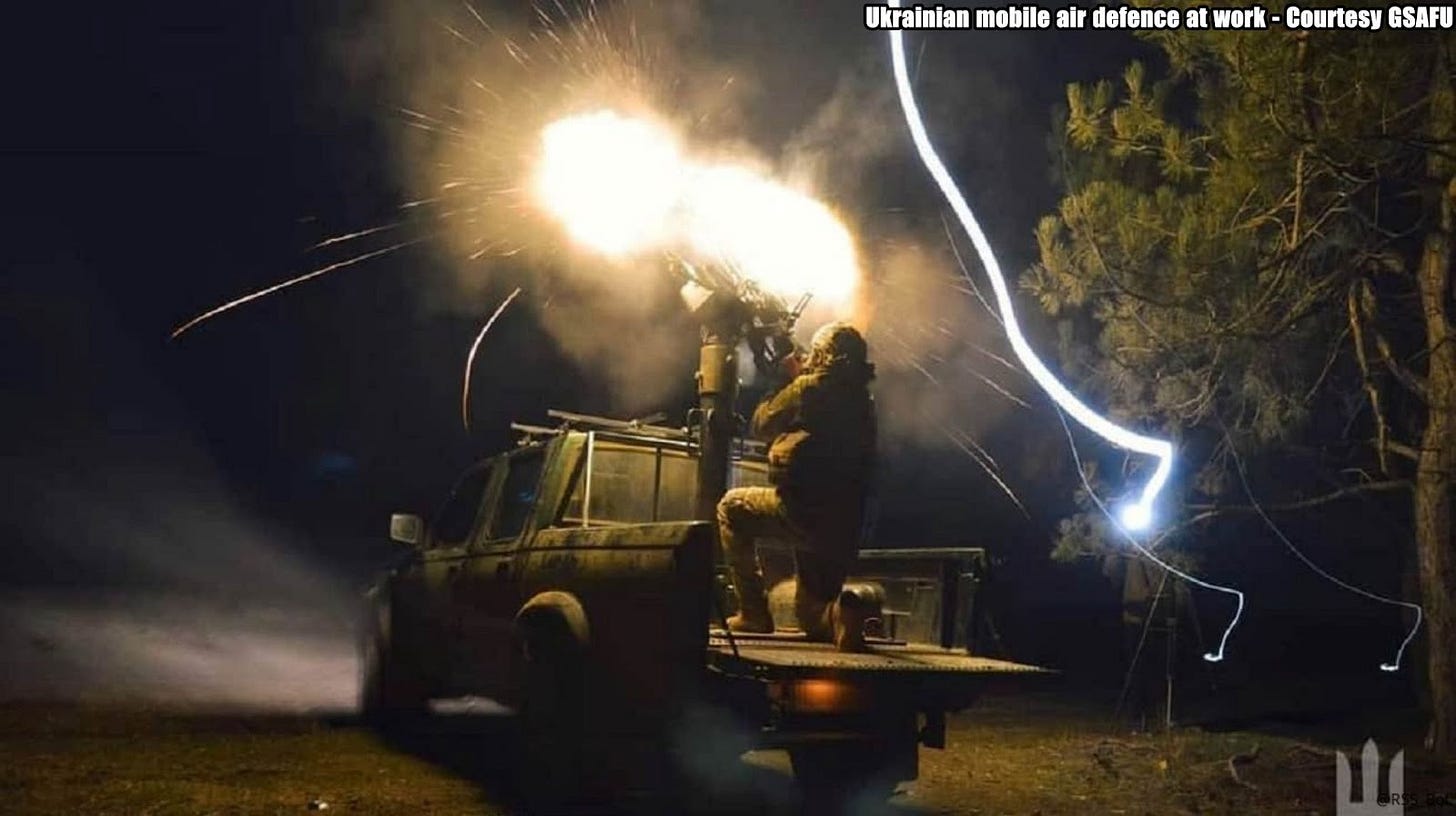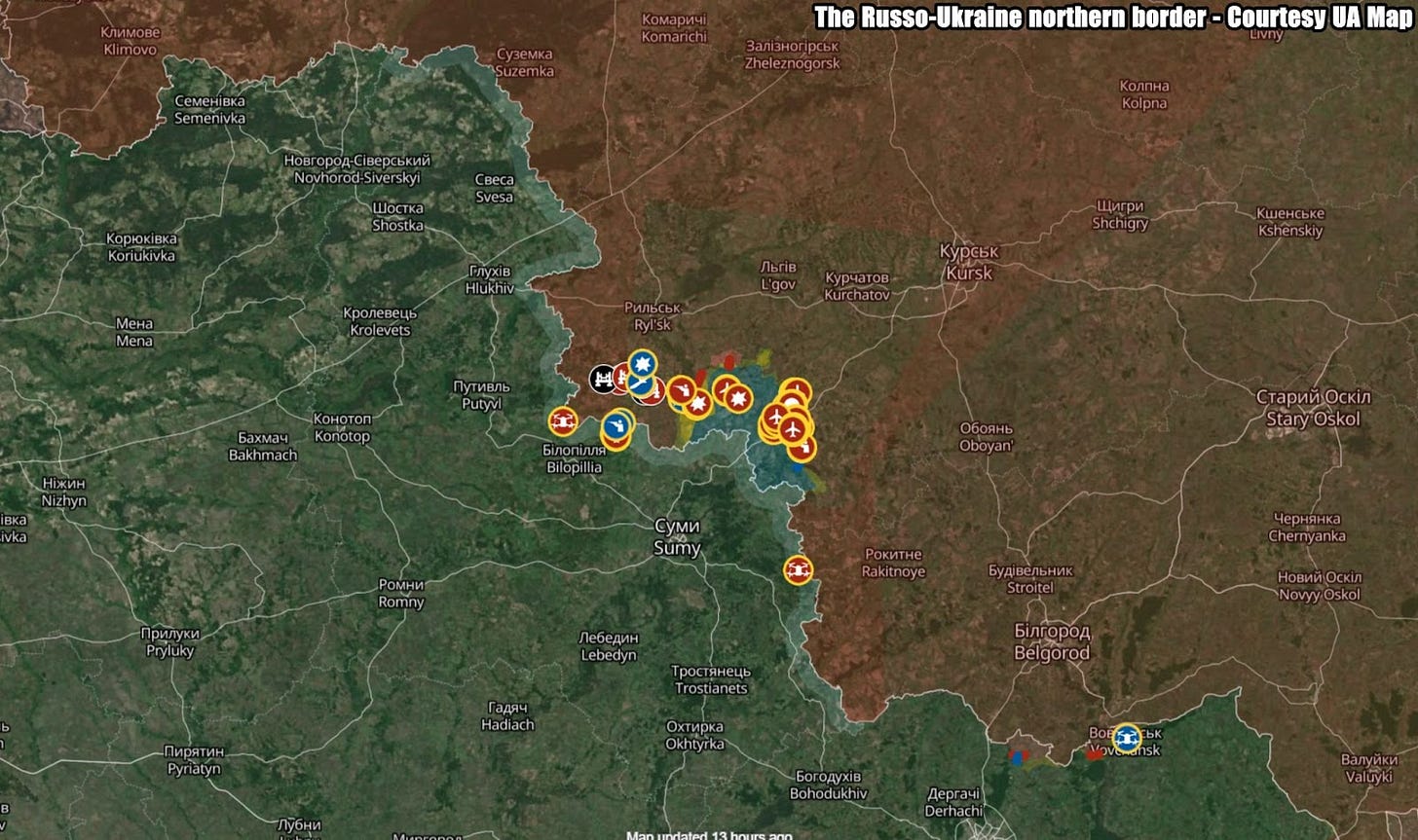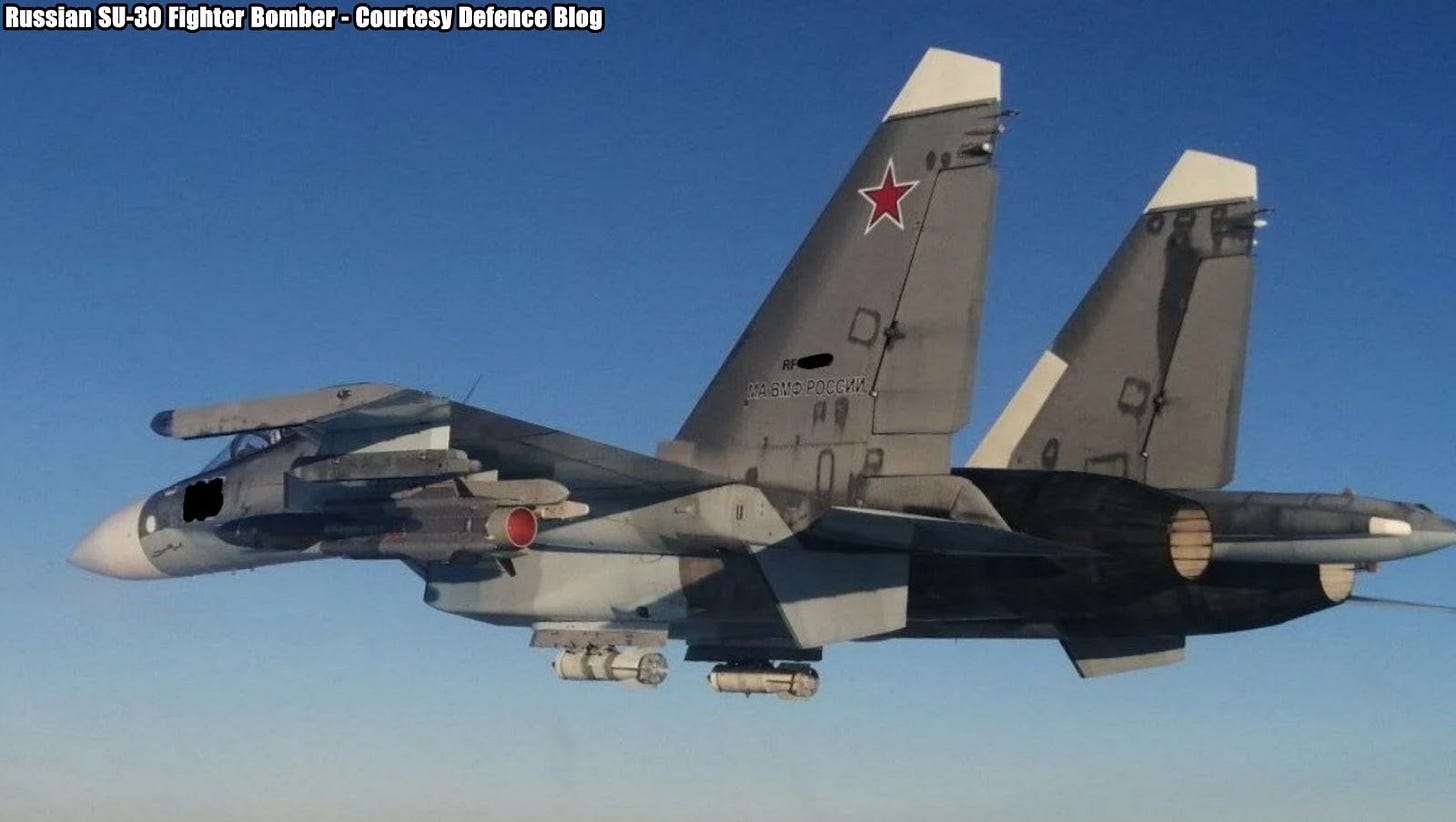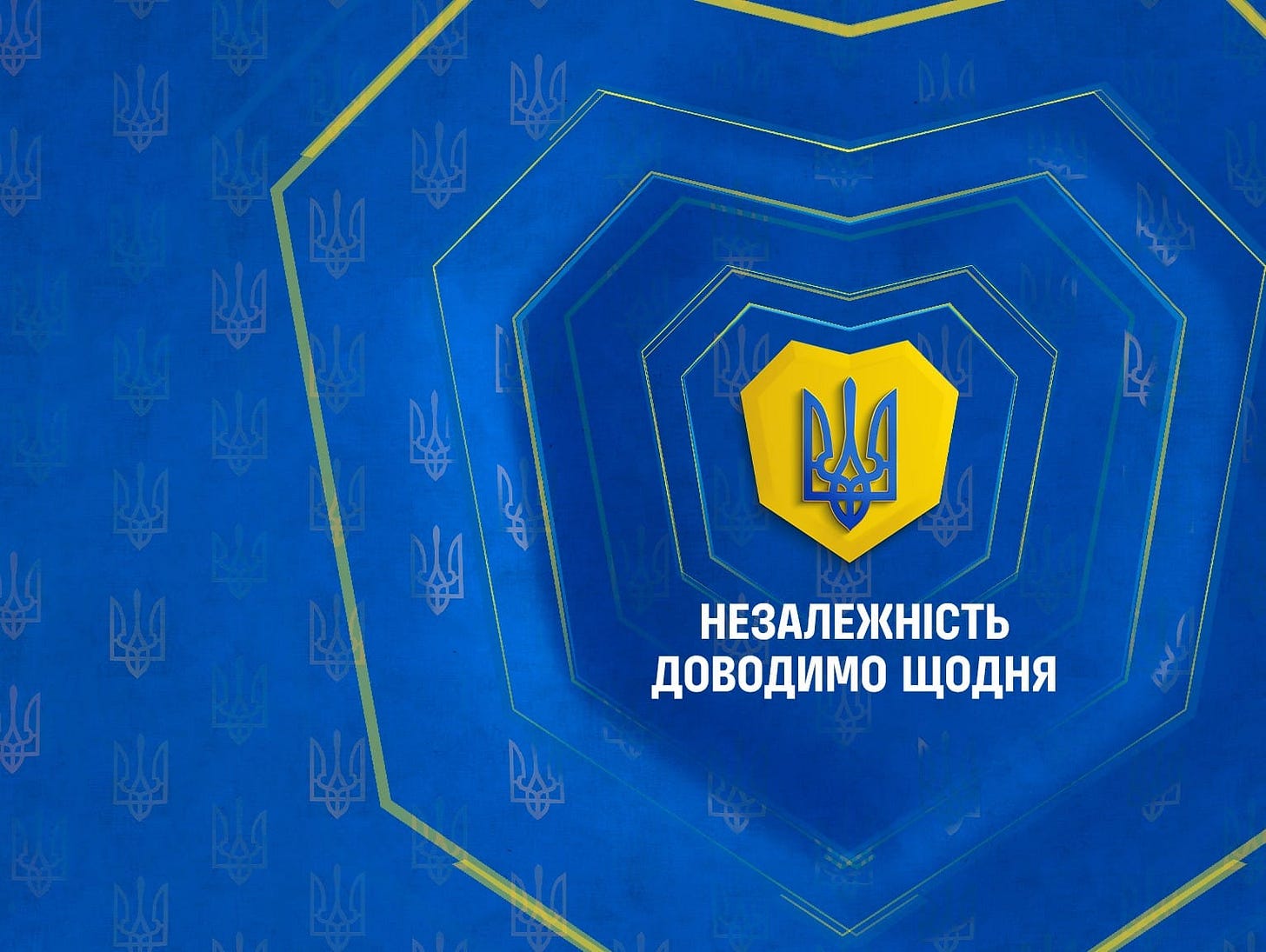Slava Ukraini! In early 2022 I began a Telegram channel aggregating news from a number of sources daily on the war in Ukraine. In June 2023 I began providing a daily draft for the Ukraine War Brief Podcast collecting news from over 70 sources daily, much of which formed the basis of the script. While the Podcast no longer exists I have continued to make this Brief available both on my own Substack and The People’s Media for those who wish to keep up with events on a daily basis.
All the latest news on the Russo-Ukraine War 6 days per week
ALONG THE CONTACT LINE
GSAFU Morning Report
The General Staff of the Armed Forces of Ukraine in its Operational Information update at 22:00 on Sep 13 stated that day 933 of the full-scale invasion of the Russian Federation against Ukraine was about to begin.
During the past day, 115 combat engagements took place. Over the past 24 hours, the enemy carried out 1 missile strike, 63 air strikes, 567 drone strikes and more than 2,900 artillery strikes across the positions of Ukrainian forces.
At the same time, Ukrainian soldiers continue to inflict losses in manpower and equipment on the occupying troops, exhausting the enemy along the entire front line and continue to disrupt the plans of Russian occupiers to advance deep into the territory of Ukraine.
Air Force Daily Report
On the night of September 14, 2024, the enemy attacked with "Shahed" type UAVs. A total of 76 "shaheeds" from the directions of Kursk, Yeisk - Russian Federation, Chauda - Crimea were identified and escorted by the Air Force's radio engineering troops.
The air attack was repulsed by aviation, anti-aircraft missile troops, units of electronic warfare and mobile fire groups of the Defense Forces of Ukraine.
As a result of anti-aircraft combat, 72 enemy attack UAVs were shot down within Odesa, Mykolaiv, Kherson, Poltava, Kharkiv, Kyiv, Donetsk, Zhytomyr, Dnipropetrovsk, Cherkasy, Vinnytsia and Sumy regions.
In addition, two enemy drones were lost in location on the territory of Ukraine, two more - returned to Russia!
The Russian Border Incursion
Russia makes marginal gains in its Kursk counterattack
The Institute for the Study of War (ISW), a US based think tank, in its Sep 13 Russian Offensive Campaign Assessment assessed that Russian forces continue to counterattack throughout the Ukrainian salient in Kursk Oblast, but the Russian military will likely have to redeploy additional elements from elsewhere in the theater to Kursk Oblast to establish a force grouping capable of pursuing a sustained counteroffensive operation. Ukrainian President Volodymyr Zelensky reiterated on September 13 that Russian forces have begun counteroffensive operations in Kursk Oblast, and Pentagon Spokesperson Major General Patrick Ryder stated on September 12 that the US has observed Russian units beginning to try to conduct "some type of counteroffensive" operation that Ryder described as "marginal."
ISW continues to track observable Russian counterattacks in Kursk Oblast but has not yet observed large-scale combat operations indicating that Russian forces have started a large-scale concerted counteroffensive operation aimed at completely expelling Ukrainian forces from Kursk Oblast.
Zelensky stated that Russian forces have concentrated 40,000 personnel in Kursk Oblast but did not specify the composition of the Russian grouping, and it remains unclear whether Zelensky’s count is representative exclusively of combat-effective Russian soldiers or a joint force that includes contract soldiers, plus less effective conscripts, irregular forces, border guards, Rosgvardia elements, and Russian Interior Ministry forces. Ukrainian military observer Kostyantyn Mashovets stated on September 13 that there are roughly 33,000 to 35,000 Russian personnel in Kursk Oblast.
Zelensky stated that the Russian military command intends to concentrate 60,000 to 70,000 personnel in Kursk Oblast, a number notably higher than the 50,000 personnel that US officials reportedly assessed that Russia would need to push Ukrainians out of Kursk Oblast. Russian authorities have largely relied on poorly-trained and equipped conscripts and small elements of Russian regular and irregular forces to address the Ukrainian incursion into Kursk Oblast thus far, and it is unlikely that most of the current Russian force grouping in Kursk Oblast is comprised of combat experienced units.
A Russian counteroffensive operation to retake territory seized by Ukrainian forces in Kursk Oblast will very likely require even more manpower and materiel than Russia has already concentrated in the area — especially if most of the already committed units lack combat experience. Russian Airborne (VDV) forces that recently redeployed to Kursk Oblast from the frontline in Ukraine currently appear to be heavily responsible for counterattacks in Kursk Oblast, suggesting that the Russian military command may intend to field units perceived to be more "elite" or combat effective to regain territory. The Russian military will most certainly have to redeploy units already committed to ongoing offensive operations or operational reserves from Ukraine to Kursk Oblast in order to field the combat-effective units needed for a large counteroffensive operation and then subsequently guard the international border against future Ukrainian incursion.
Ukrainian Strikes Disrupt russian Supply Routes in Kursk Region
The UK Ministry of Defence in their Sep 14 Intelligence Update on Ukraine stated Ukraine focuses on key infrastructure to hinder Russian supply efforts. In a continued effort to disrupt Russian military operations, Ukrainian forces have carried out a series of targeted strikes in Kursk region. The strikes, which focused on key infrastructure, resulted in the destruction of both road and pontoon bridges over the Seym River, a critical artery for Russian logistics in the area, the UK Defense Intelligence.
By targeting these bridges, Ukraine aims to hamper the movement of Russian military supplies and reinforcements, creating significant challenges for Russian forces’ operational mobility. The strikes also serve to undermine Russian efforts to maintain effective supply lines in the region, a tactic that has proven crucial throughout the conflict.
-
The Khortytsia operational-strategic group
(Responsible for the northeastern part of Ukraine. )
Kharkiv Sector: Over the last day Ukrainian Defense Forces repelled 4 Russian attacks near Hlyboke, Lyptsi, Hatyschche and Vovchansk. 2 engagements continue.
Kupyansk Sector: Russian Forces carried out 11 unsuccessful offensive actions against Ukrainian defensive positions near Synkivka, Petropavlivka, Hlushkivka and Lozova, Stelmahivka and Novoselivske.
Lyman Sector: Russian Forces carried out 22 offensive actions against Ukrainian defensive positions near Tverdokhlibove, Hrekivka, Makiivka, Nevske, Yampolivka,Torske, Serebryansk and Bilohorivka. 2 engagements continue.
Siversk Sector: Russian forces carried out 3 unsuccessful assaults in the vicinity of Verkhnokamianske and Spirne and Vyimka.
Kramatorsk Sector: Russian forces carried out 3 unsuccessful offensive actions near Kalinina, Chasiv Yar and Andriivka.
Toretsk Sector: Russian forces carried out 6 unsuccessful offensive actions with air support near Dachne, Toretsk and Nelipivka. 1 battle is ongoing.
The Tavria operational-strategic group
(Responsible for the central-eastern and southeastern part of Ukraine.)
Pokrovsk Sector : The enemy conducted 19 attacks against Ukrainian defences in this area over the last day in the vicinity of, Novooleksandriivka, Novotoretske, Hrodivka, Novohrodivka, Selydove and Mykhaillivka. 3 engagements are ongoing. The enemy suffered significant losses.
Kurakhove Sector: The situation in this area is quite serious. There were 35 combat clashes in the vicinity of Ukrainsk, Zhelanne Pershe, Heorhiivka, Konstantinivka and Katerynivka. 3 engagements are ongoing.
Vremivka Sector: Russian forces, supported by aviation, made 7 assaults against Ukrainian positions near Zolota Nyva and Vuhledar. 2 engagements are ongoing.
Orikhiv Sector: There has been no significant change in the combat environment in the last 24 hours.
The Odesa operational-strategic group
(Responsible for Kherson, Qırım, (also known as Crimea) and the Black Sea.)
Prydniprovsk Sector: In this sector, over the last day, the situation has not changed significantly. Russian forces made 5 unsuccessful attempts to force Ukrainian units from their positions on the left bank of the Dnipro.
TEMPORARILY OCCUPIED TERRITORIES
ICC team investigates Russian torture chambers in Kharkiv Oblast
The International Criminal Court investigators collected evidence of Russian war crimes amid the ICC Prosecutor Karim Khan’s sixth visit to Ukraine. Euromaidan Press reports.
The International Criminal Court (ICC) has intensified its investigation into Russian war crimes committed in Ukraine, with a focus on torture chambers established by Russian forces in the Kharkiv Oblast. Brenda J. Hollis, who leads the ICC Office of the Prosecutor’s investigations into international crimes in Ukraine, along with her team and representatives from the Ukrainian prosecutor’s office, inspected these torture sites on Friday, 13 September 2024.
Ukrainian prosecutors, working alongside other law enforcement agencies, have identified 25 torture chambers in the Kharkiv Oblast. The evidence collected reveals horrific acts of physical, psychological, and sexual violence against detainees. Victims were subjected to severe malnutrition, given only technical water to drink, and endured brutal torture methods including tooth extraction, nail removal, electric shocks, and beatings with rubber batons.
Yuriy Belousov, head of the Department for Combating Crimes Committed in Armed Conflict at the Office of the Prosecutor General of Ukraine, said their cooperation with the ICC continues. “The main focus should be on criminals at all levels, for whom there is sufficient evidence to bring to criminal responsibility, regardless of rank or position. We are doing everything possible to ensure that criminals are held accountable by law. All of them. It’s only a matter of time.”
The ICC’s involvement at sites comes as part of a broader investigation into criminal acts committed in Ukraine. ICC Prosecutor Karim Khan, who concluded his sixth visit to Ukraine on 13 September 2024, emphasized the importance of this work: “We will not let up our focus; we will increase the intensity of our work; we will deepen our partnerships with all our Ukrainian counterparts until we have truly demonstrated the potential of the law in this moment.”
THE HOME FRONT
Ukraine repels massive Russian drone attack, shoots down 72 Shahed suicide drones
On the night of Sep 14, Russia launched 76 drones at Ukraine which targeted 12 oblasts, but none reached their targets.The assault was met with a robust response from Ukraine’s air defense systems, mobile fire groups, and army aviation. Ukraine’s Air Force reported destroying 72, with two crashing and two returning to Russia. Euromaidan reports.
President Volodymyr Zelenskyy reported that the drones were launched against Kyiv, Cherkasy, Zhytomyr, Vinnytsia, Odesa, Sumy, Dnipropetrovsk, Poltava, Kherson, Kharkiv, and Donetsk oblasts.
The Air Force of Ukraine provided more detailed information, stating that they detected and tracked 76 Shahed 131 and/or Shahed 136 UAVs launched from Kursk, Yeysk in Russia, and Chauda in occupied Crimea. They also noted that in addition to the 72 drones shot down, two Russian drones were “locationally lost,” i.e. crashed on Ukrainian territory, and two more returned to Russia.
Odesa and Kyiv authorities reported the activity of air defenses at night. According to Suspilne, the air raid alert in Odesa Oblast lasted for over four hours, from 00:57 to 05:33. The first explosions in Odesa city were heard around 01:30. The Ukrainian Navy reported successfully downing nine Shahed-136 drones over Odesa Oblast.
In Kyiv, Mayor Vitali Klitschko reported that air defense systems were active over the capital. Debris from a downed drone fell on the premises of a public utility in the Obolon district, but no fire or casualties were reported.
RUSSIAN WORLD
Ukraine’s Kursk incursion has disrupted Russian plans for offensive operations on the northern border
The Institute for the Study of War (ISW), a US based think tank, in its Sep 13 Russian Offensive Campaign Assessment stated that the Ukrainian incursion into Kursk Oblast has reportedly spoiled planned Russian offensive operations along the international border area that likely aimed to expand the area of active combat operations across a broader front in northeastern Ukraine.
Ukrainian President Volodymyr Zelenskyy stated on September 13 that the Ukrainian operation in Kursk Oblast stopped Russian plans to create several buffer zones along the Ukrainian border "from the east to the north," including in Sumy Oblast. Zelensky stated that Russian forces wanted to launch major offensives to seize regional centers, likely referring to the regional capitals of Sumy and Kharkiv cities. Sumy and Kharkiv cities are roughly 25 and 30 kilometers from the international border, respectively – significantly further than the approximately six to 10 kilometers that Russian forces currently occupy near Lyptsi (north of Kharkiv City) and Vovchansk (northeast of Kharkiv City).
Zelenskyy's statement suggests that Russian forces planned to start new offensive operations aimed at penetrating at least 25 kilometers deep into Sumy and Kharkiv oblasts and activating along a much wider front between at least Sumy and Kharkiv cities. Ukrainian Commander-in-Chief General Oleksandr Syrskyi similarly stated on September 5 that the Ukrainian incursion spoiled a planned Russian attack into Sumy Oblast and "reduced the threat" of Russian incursions into northern Ukraine.
ISW previously assessed that the Russian offensive operation in northern Kharkiv Oblast aimed to fix Ukrainian manpower and materiel along the northern border, granting Russian forces opportunities to re-intensify offensive operations in other higher-priority areas of the theater. Ukrainian forces have largely stabilized the frontline in the Kharkiv direction since Summer 2024 and continue to contest the tactical initiative through counterattacks that have regained limited positions in northern Kharkiv Oblast. The Russian military command may have intended for additional offensive operations along a wider and more continuous front in northeastern Ukraine to significantly stretch Ukrainian forces along the international border following the Ukrainian stabilization of the frontline north and northeast of Kharkiv City.
Zelenskyy noted that the Ukrainian incursion into Kursk Oblast has also impacted Russian offensive operations in Donetsk Oblast. Zelensky stated that the Ukrainian incursion "slowed" Russian advances throughout Donetsk Oblast and reduced the advantage in artillery ammunition that Russian forces in the Pokrovsk direction had over Ukrainian forces from 12-to-1 to 2.5-to-1.
ISW is unable to verify Zelenskyy’s statement, though the rate of Russian advance in the Pokrovsk area has notably slowed since the start of September 2024.
Ukraine's Main Military Intelligence Directorate (GUR) Head Lieutenant General Kyrylo Budanov stated during an interview published on September 7 that Ukraine’s incursion into Kursk Oblast complicated Russia's plans for offensive operations, including in Russia's "main direction" (likely referring to the Pokrovsk direction), in August 2024 and later this fall. ISW has recently observed indications that Russian authorities have transferred limited elements of likely Russian reserve units from Donetsk Oblast, including from the Pokrovsk direction, to Kursk Oblast to counter the Ukrainian incursion. Such limited redeployments are unlikely to have an immediate impact on the tempo of Russian offensive operations, although Russian forces may struggle to maintain their current offensive tempo into the future if Russian authorities conduct additional redeployments from reserve forces in Donetsk Oblast.
NEWS WORLDWIDE
UK Prime Minister hints at developments in allowing Ukraine to conduct long-range strikes
U.S. President Joe Biden and U.K. Prime Minister Keir Starmer met one-on-one for around 20 minutes in the Oval Office in Washington DC on Friday before a longer group meeting with aides, on strategic challenges including Ukraine and the Middle East. Politico reports.
Starmer, speaking after the meeting, said no final decision had been taken on the Storm Shadow missiles, and hinted further developments may follow at the gathering of the UN General Assembly later this month. “We'll obviously pick up again in UNGA in just a few days time with a wider group of individuals,” he said.
Officials on both sides of the Atlantic stressed repeatedly that there would be no decision moment on Storm Shadow missiles from Friday’s meeting. White House National Security Communications Advisor John Kirby said: “I wouldn't be looking for an announcement today about long range strike capabilities inside Russia. There's no change to our policy with respect to that.”
That did not prevent Russia and Ukraine each ramping up pressure on the U.K. and U.S. — who already fear escalation. “It’s difficult to repeatedly hear, ‘We are working on this,’ while Putin continues to burn down our cities and villages,” Ukrainian President Volodymyr Zelenskyy wrote on X Friday.
Trudeau: Canada fully supports Ukraine using long-range weaponry in Russia
Canadian Prime Minister Justin Trudeau has firmly stated that Ukraine should be allowed to conduct long-range strikes inside Russian territory, despite threats from Moscow. Global News reports.
This stance comes in the wake of Ukrainian forces occupying parts of Russian territory for the first time since World War II, and Ukrainian officials asking Western partners to remove restrictions on the use of Western long-range weapons so that Ukraine can degrade Russia’s logistics and airfields in the rear and bring the war to an end faster.
“Canada fully supports Ukraine using long-range weaponry to prevent and interdict Russia’s continued ability to degrade Ukrainian civilians and infrastructure, and mostly to kill innocent civilians in their unjust war,” Trudeau declared at a news conference in Sainte-Anne-de-Bellevue, Quebec.
The Prime Minister’s comments directly challenge Russian President Vladimir Putin’s recent warnings that NATO would be entering into war if it allows Ukraine to use donated weapons for long-range strikes within Russia. Trudeau emphasized the importance of Ukraine’s victory in this war, arguing that failure to push back against Russia’s aggression could encourage other large nations to attempt absorbing their neighbors.
Trudeau also placed the responsibility for the war squarely on Putin’s shoulders, stating,
“It was his choice to invade a neighboring, sovereign nation, his choice to start this conflict and it can be his choice to end it tomorrow. All he has to do is to pull back his troops into Russian territory. … But he won’t do this. He is trying to deeply destabilize the international order that protects us all.”
his development follows the United States’ decision in May to allow Ukraine to use American weaponry for strikes inside Russia, albeit limited to targets near the border that pose a threat to Kharkiv, Ukraine’s second-largest city.
US warns RT is directly involved in Russian intelligence operations.
The U.S. State Department issued a press release on Sept. 13 saying that the Russian state-run media outlet RT is not just involved in spreading propaganda and misinformation, but is actively working with Russian intelligence to target countries across the world.
"We now know that RT moved beyond being simply a media outlet and has been an entity with cyber capabilities," the statement read.
"(RT) is also engaged in information operations, covert influence, and military procurement. These operations are targeting countries around the world, including in Europe, Africa, and North and South America."
The warning follows similar statements in recent weeks that Russia is planning information campaigns to sow division in U.S. society and undermine support for Ukraine in swing states during the upcoming presidential race. A U.S. official told Reuters that RT is attempting to push U.S. viewers toward voting for Donald Trump in the presidential election through a network of Western media personalities.
Earlier in September, the U.S. announced a sweeping crackdown on supposed Russian election interference, seizing 32 internet domains linked to Kremlin propaganda campaigns and sanctioning several high-profile propagandists working for RT.
Alongside the new warning about RT, Secretary of State Antony Blinken said that "the State Department also designated the Russian state-funded and directed media company Rossiya Segodnya and five of its subsidiaries, including RT, under the Foreign Missions Act."
"As a result, these actors are now required to notify the State Department of all personnel working in the U.S. as well as their property."
Blinken reiterated the State Department's warning, saying that "Rossiya Segodnya and these five subsidiaries are no longer merely firehoses of Russian government propaganda and disinformation; they are engaged in covert influence activities aimed at undermining American elections and democracies, functioning like a de facto arm of Russia's intelligence apparatus."
RT and the other subsidiaries are also actively assisting in a crowdfunding program to "provide support and military equipment — supplies, weaponry — to Russian military units in Ukraine," Blinken said.
While the U.S. is conscious not to impinge on free speech, "even when it comes to media outlets that wittingly spread government propaganda," Blinken said that "we will not stand by as RT and other actors carry out covert activities in support of Russia's nefarious activities."
MILITARY & TECH
Russian Su-30SM fighter jet crashes over Black Sea
A Russian Su-30SM fighter jet crashed into the Black Sea on the night of September 10 near Sevastopol during a strike operation targeting Ukraine. Defence Blog reported citing sources in the Ukrainian intelligence community.
The aircraft, which took off from the Saki airbase in Novofedorivka, disappeared from radar after launching four of its six missiles at maritime targets, according to initial reports.
Sources suggest that the fighter jet may have been shot down by a man-portable air defense system (MANPADS) fired from a boat in the Black Sea. Although the exact cause of the crash has not been confirmed, reports from the area point to a possible MANPADS strike. According to available information, both pilots are believed to have died in the incident.
“There has been no official confirmation regarding the fate of the two crew members, but it is highly likely that neither survived,” analysts indicated.
Ilya Tumanov, a prominent figure in the Russian military aviation community and administrator of the ‘Fighterbomber’ channel, confirmed the loss of the Su-30SM. The jet had been part of an operation firing missiles at towers in the Black Sea before it vanished from radar.
The Su-30SM is one of Russia’s more advanced multirole fighters, and its loss marks a significant setback for Russian forces in the ongoing conflict with Ukraine.
That’s it for today’s Draft folks if you would like to keep up with events in Ukraine daily please consider subscribing, its free!
Feel free to share this update with your friends. Heroyam Slava!







